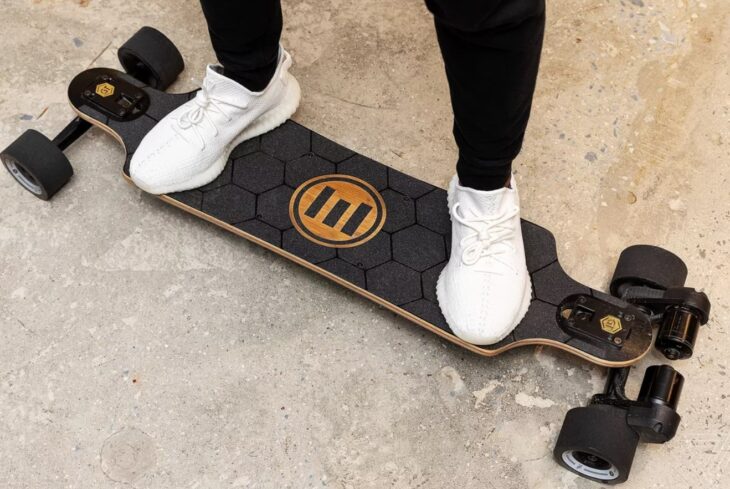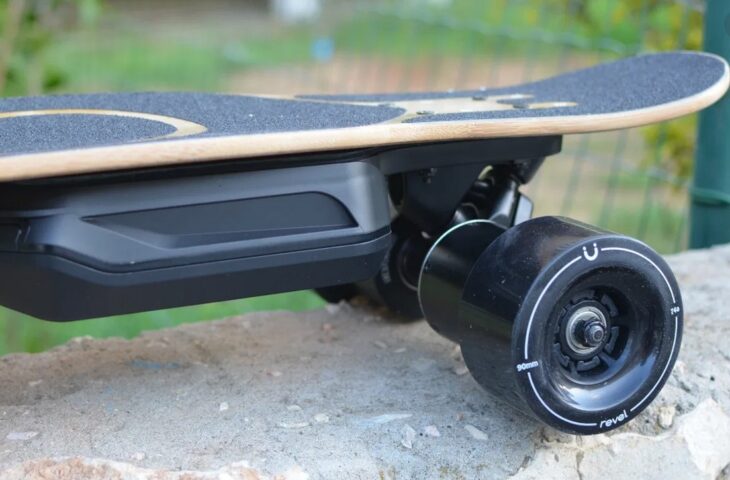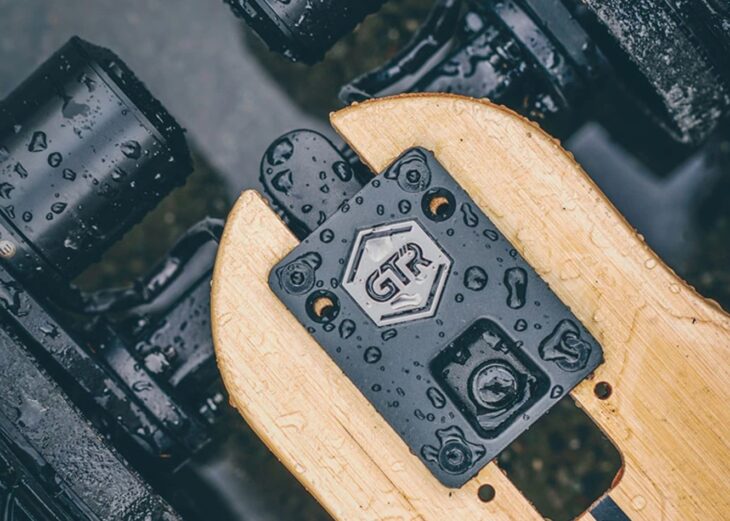The newest craze in the extreme sport department are electric gadgets. In the olden days you had to be our own propulsion system and move along using your legs and feet. Today however, due to the advancements in smart technologies, riders of all kind are able to perform their tricks and ride around freely thanks to their modern skateboards. Electric skateboards are still relatively new and not nearly as mainstream as their predecessors. Devoted enthusiasts will probably always choose the real deal but younger generations that are growing up surrounded with tech are drawn towards electric models, which is both natural and understandable.
If you are among those interested in the newest type of skateboard on the market, you came to the right place. In this article we are going to tell you how an electric skateboard works exactly. What is more, this will serve as a sort of guide on all things related to these innovative techie gadgets. If you are interested in learning more about them or purchasing one for yourself or a skateboarder in your life, make sure to click here.

Source: Digital Trends
Contents
How do they work?
Right off the bat, we will tell you that these skateboards almost exclusively come alongside a remote control. This remote has all the commands you need to ride around. The commands are used for acceleration and breaking. From the remote, the data is transferred through electromagnetic waves directly to the ESC (Electronic Speed Controller) in the board itself. Bluetooth technology is in charge of this transfer and it acts as the mediator between the remote and the board. There is also a battery on the board that stores the needed electricity, which the motor uses to move the board and go forward. And that is all that is to it. Everything else is in the hands (feet?) of the rider.
What are they and why do they exist?
If you think about skateboards of old, you can argue that the biggest drawback is actually the way you ride them. When you are going slightly downhill you can twist and turn, jump and flip, without the need to accelerate with your leg. On flat terrain you constantly have to push yourself, and despite it being the very core of the activity as a whole, many people are driven away due to this. E-boards or e-skateboards as they are called eliminate this leg motion in favor of constant moving. This not only gives you more time to enjoy the ride and get somewhere faster, while doing tricks more easily, but also rests your legs and protects the knee and ankle joints. What is more, you can finally go somewhat uphill on your board! When you have to break, it is also easier and more reactive than what you would normally have to do.

Source: The Verge
Main parts
There are three different types of parts on every electric skateboard. The first are basic components, the second are mechanical components, and the third are electric components.
1. Basic
Basic components include the deck, the wheels, the truck, and the wheels. The deck is the most obvious and the most important part of the board. It is almost always made out of wood, between 3 and 12 piles of hard (usually) maple wood that is laminated and pressed. Some more durable and sturdier models also use fiberglass or carbon to increase the strength of the deck. Three types of decks exist, freeride, cruiser, and downhill, each pretty self-explanatory.
Trucks are those two metal axes on the front and the end part of the deck. They exist to transfer the weight of the rider’s body onto the wheels. What is more, since they are not completely fixated onto the deck, they allow you to turn left and right. Here are five smaller parts on each truck, hanger, bushings, baseplate, kingpin, and axle. There is no skateboarding without quality trucks as they are literally responsible for riding, balancing, and turning.
Lastly, we have the wheels, without which of course there is no boarding. Do you see the pattern? Every single basic part is crucial. The wheels continue the transfer of your weight, taking it from the deck and the truck and dropping it to the pavement below. Numerous sizes, shapes, and colors exist, but most of them are made out of polyurethane. Larger roll faster, accelerate slower, and move more easily on rough terrain, while smaller roll give lower center of gravity, accelerate faster, and reach lower speeds.

Source: Electrek
2. Mechanical
Mechanical components include the motor, which is the most important part of the electric skateboard. Two types exist, hub motors and belt motors.
Hub motors are inside the wheels and they are very quiet while operating. Nobody will be able to tell that you have an e-board at first. The biggest downside to these is greater exposure to concussions and physical damage. The heat also has trouble escaping through the tight packaging of the wheel. There are some holes in the wheels but that allows water to come in, causing another issue for this type of motor.
Belt motors on the other hand are noisier and classic. They are typical, traditional motors that use belts to move the wheels. Air has no trouble reaching the heating parts and the whole thing is therefore much more water resistant than its hub cousin.
3. Electric components
The battery, ESC, remote control, and Bluetooth transmitters and receivers are the four electric components.
The range of batteries is quite extensive. The bigger it is the power it holds allowing for longer sessions between two charges. Lithium-ion batteries are the most common, like with everything else.
The brain of the electric skateboard is the Electronic Speed Controller (ESC) as it tells the battery how much power to send to the motor. It is connected to all of the other electric parts and has a small computer that processes necessary data.
The best of the remote controls allow thumb pushing forward for acceleration and backward for braking. Others have triggers for the index finger to pull and open the throttle, or close and brake. These are all slight variations on the same two-button system that is rather easy to use.
Lastly, the Bluetooth transmitter is housed inside the controller, while the receiver is in the ESC inside of the board.

Source: Evolve Skateboards
Accessories
There are also accessories you can get to upgrade your board and be safer on the roads. LED front and backlights exist that are easy to setup and use. Nose guards will prevent you from damaging the front end of the board against walls and curbs. An extra battery is a smart investment just in case, while wheel guards or mudguards will keep things cleaner. Lastly, you can also buy special rain wheels that are designed to prevent the water from getting inside the wheels and splashing the board.
